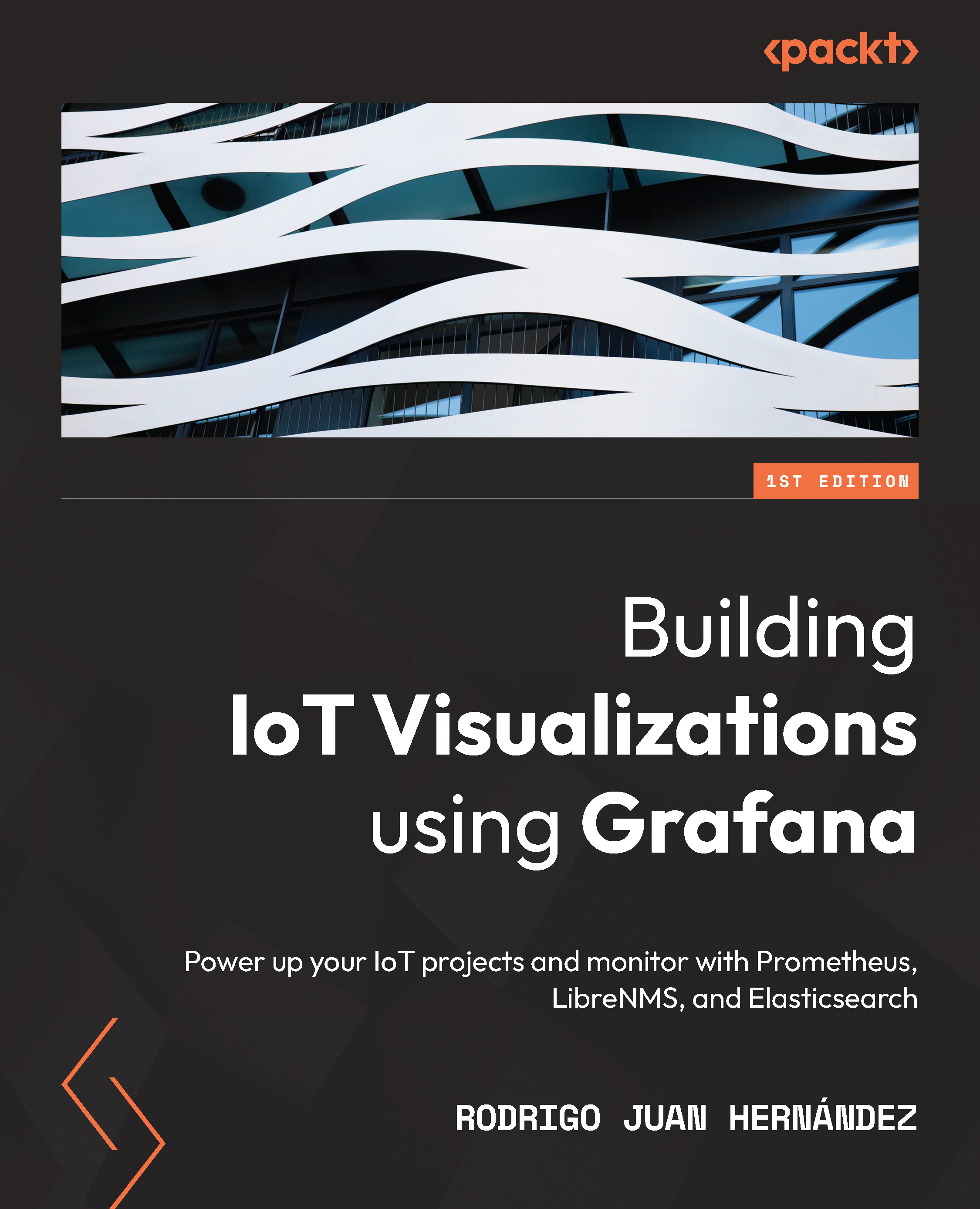Configuring LibreNMS to use InfluxDB
By default, LibreNMS stores its metrics in RRD files. However, you can send the data to other databases, such as Graphite, InfluxDB, OpenTSDB, or Prometheus.
In this chapter, we are going to use InfluxDB. This integration allows you to save the metrics in a time-series database that can be accessed by other systems, such as Grafana.
Important Note
LibreNMS and InfluxDB are completely separate and independent projects. The LibreNMS website says that it doesn't guarantee that InfluxDB integration will always work. However, at the time of writing this book, all is going well.
Let´s see how to configure LibreNMS to send metrics to InfluxDB.
Before configuring LibreNMS, you have to create a database in the InfluxDB instance. Also, it’s good practice to create a username and a password for accessing the database. For security reasons, avoid using the admin user.
The main configuration file of LibreNMS – conFigurephp...


























































